At Design Miami Paris, an artful menagerie tells a story of scent and nature
Vikram Goyal and Sissel Tolaas present ‘The Soul Garden’ at Design Miami Paris (until 26 October 2025), ‘a contemporary fable where the animals take new forms, reimagined for the world we live in today’
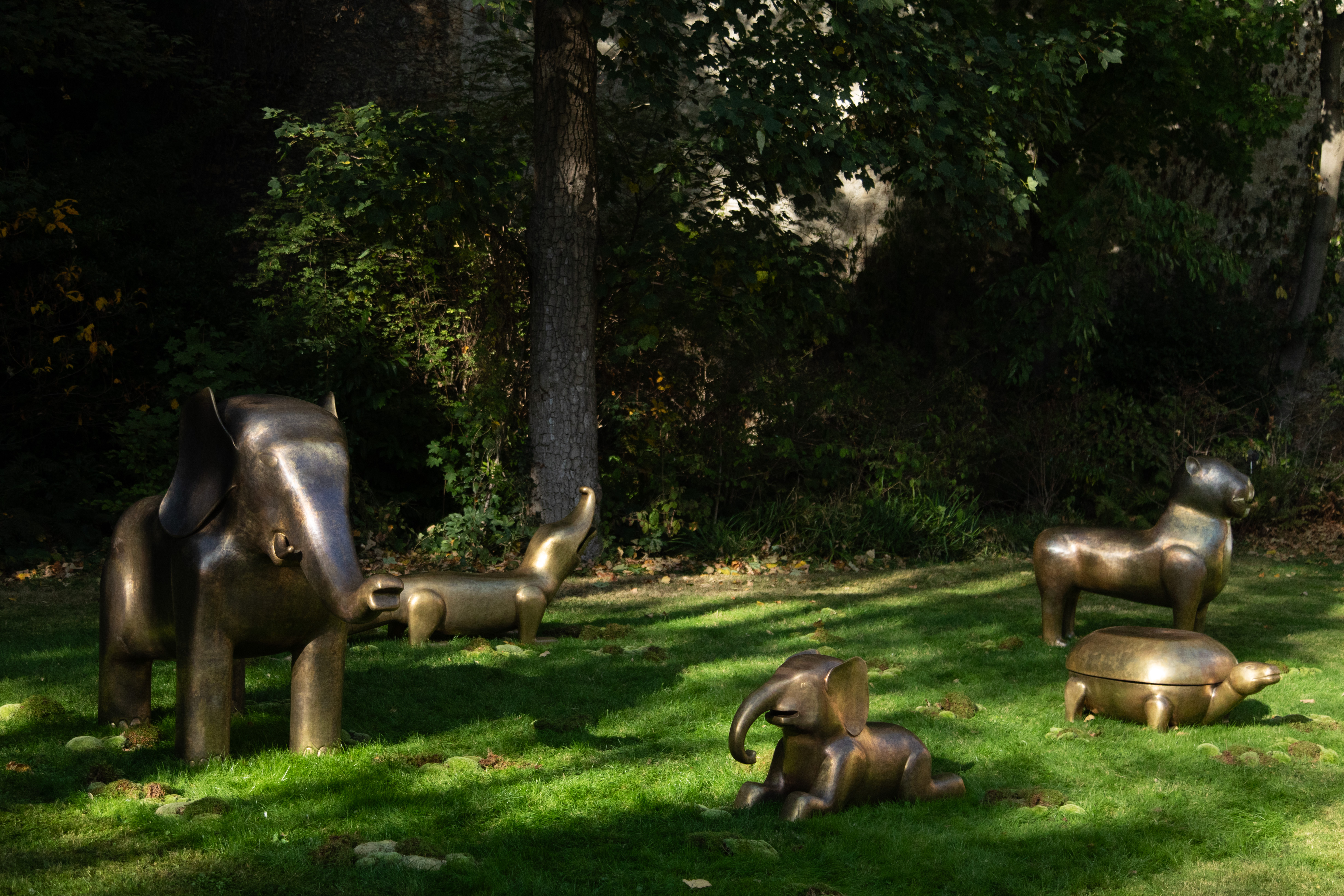
What do tigers and popcorn have in common? If you don’t already know, read on.
In the elegantly manicured gardens of L’Hôtel de Maisons (once the Parisian home of Karl Lagerfeld) five sculpted animals make up an inviting menagerie. This is ‘The Soul Garden’, a sensory installation by New Delhi-based designer Vikram Goyal, created in collaboration with olfactory artist Sissel Tolaas and presented by The Future Perfect for Design Miami Paris 2025.
Discover ‘The Soul Garden’ by Sissel Tolaas and Vikram Goyal
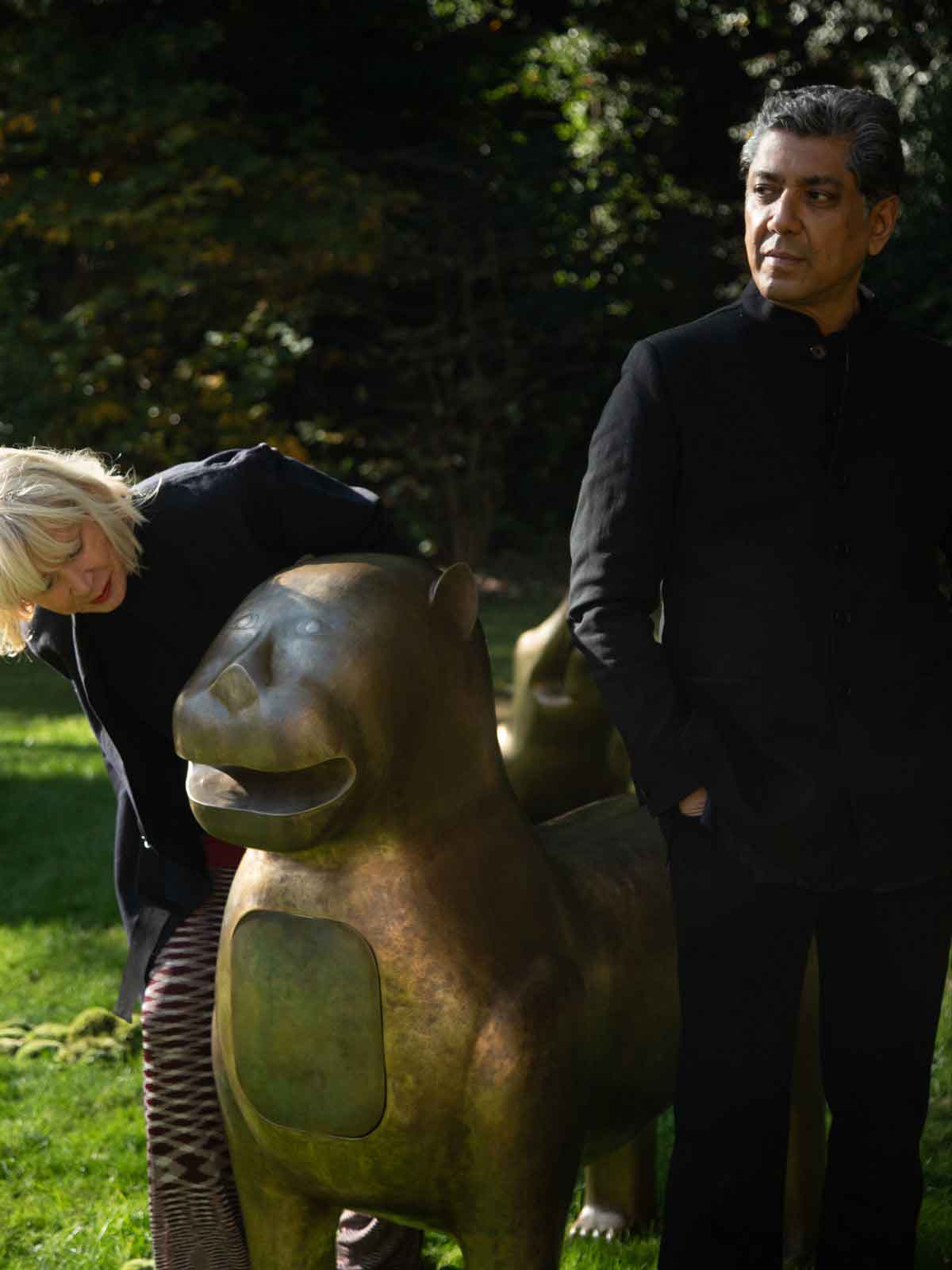
While Design Miami’s audience of collectors are no strangers to animal-themed art (who doesn’t love Les Lalannes?), Goyal’s creature kingdom is a step beyond. Described by Goyal as 'a new fable for our turbulent times', ‘The Soul Garden’ reimagines India’s ancient Panchatantra animal stories as sculptural embodiments of empathy and coexistence.
In the designer’s signature burnished repoussé brass and copper, there is an elephant and calf (Gaja and Karabha), a tiger (Vyaghra), a tortoise (Kurma), and a crocodile (Nakra). Each animal represents a human virtue – strength, patience, loyalty, wisdom – and each contains a hidden compartment depicting a fable hand-carved in miniature relief.
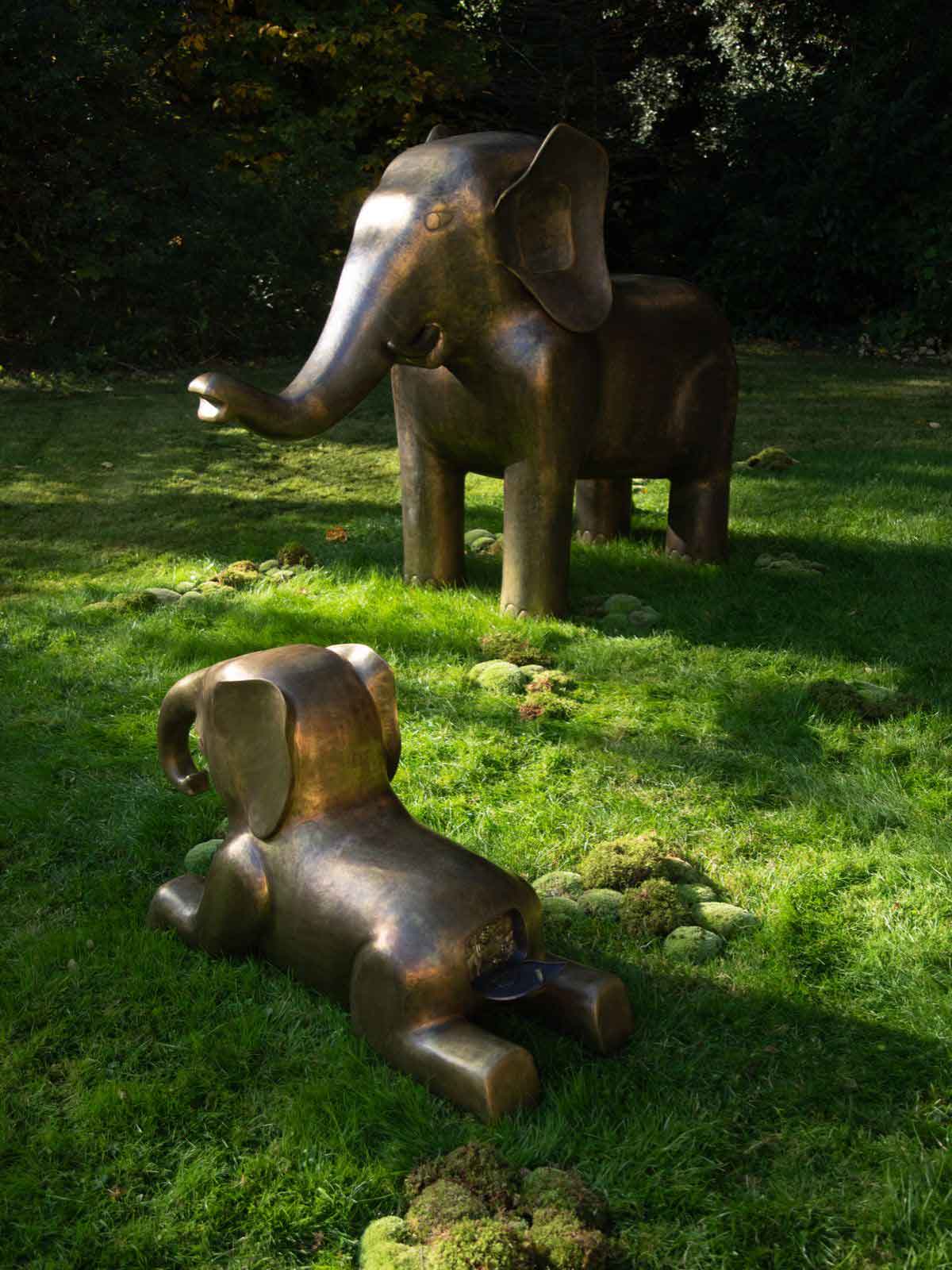
In India, explains Goyal, animals hold ancient philosophical significance: 'They are sacred, sentient and divine. Many embody essential virtues – strength, wisdom, loyalty, tranquillity. This recognition of their spiritual equivalence has led to their protection and veneration for centuries. Soul Garden is a contemporary fable where the animals take new forms, reimagined for the world we live in today.'
Alongside each sculpture, there is seating to encourage visitors to lower themselves to the animals’ level and sit with them, reflecting on the messages in the fables. In doing so, they also get closer to the ground – both the grass and the stools are embedded with nano-scent activators conceived by Tolaas, whose practice transforms smell into an emotional, conceptual medium.
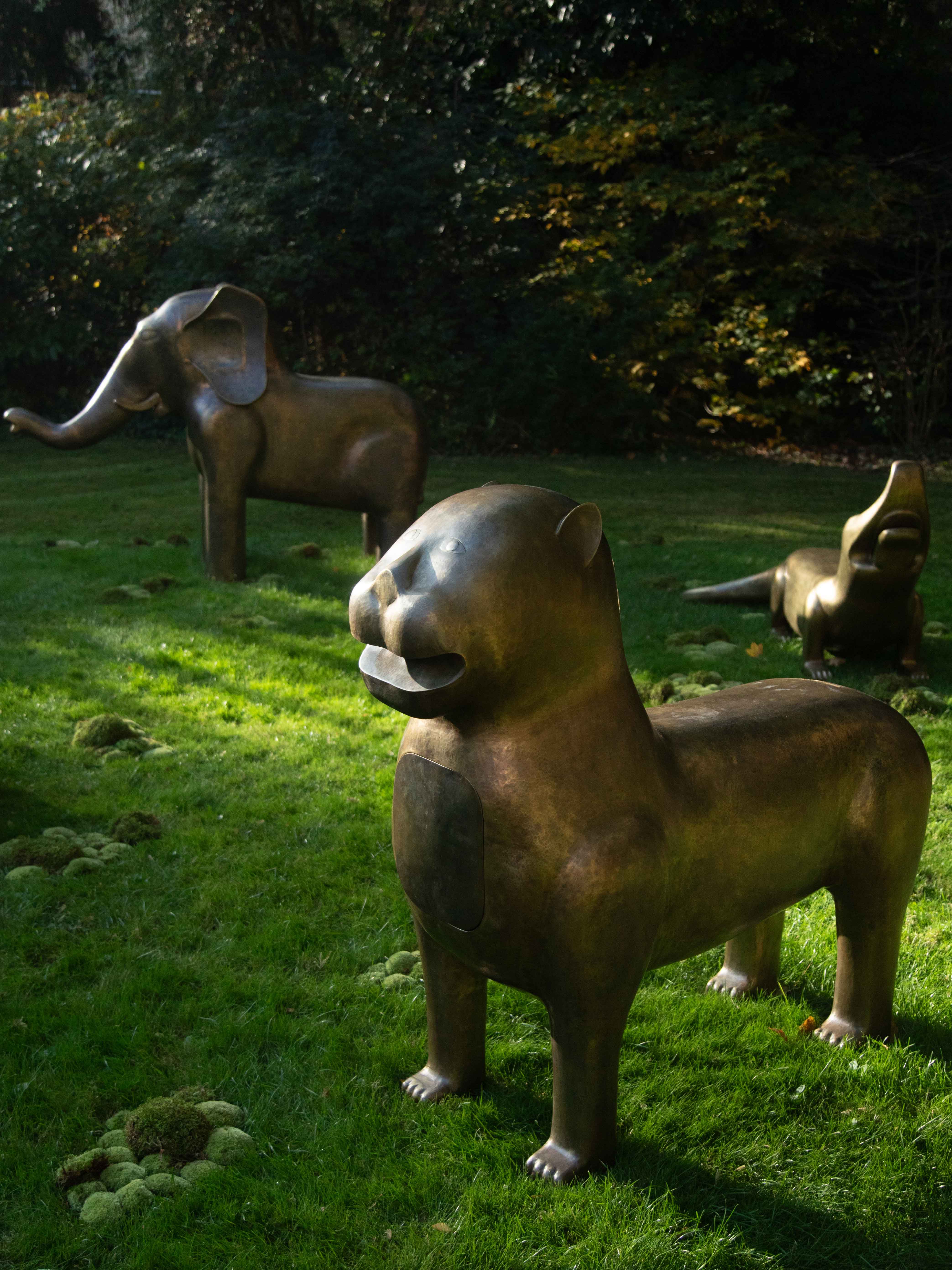
'For animals, smell is their primary language,' says Goyal. 'It’s how they find food, recognise kin, warn of danger and even express emotion. Scent is a story, and to be true to the intelligence of animals, “The Soul Garden” needed to speak in this invisible but powerful register.'
Receive our daily digest of inspiration, escapism and design stories from around the world direct to your inbox.
Both smells and fables bypass logic and go straight to memory, he explains. 'A scent can collapse decades into a single instant.'
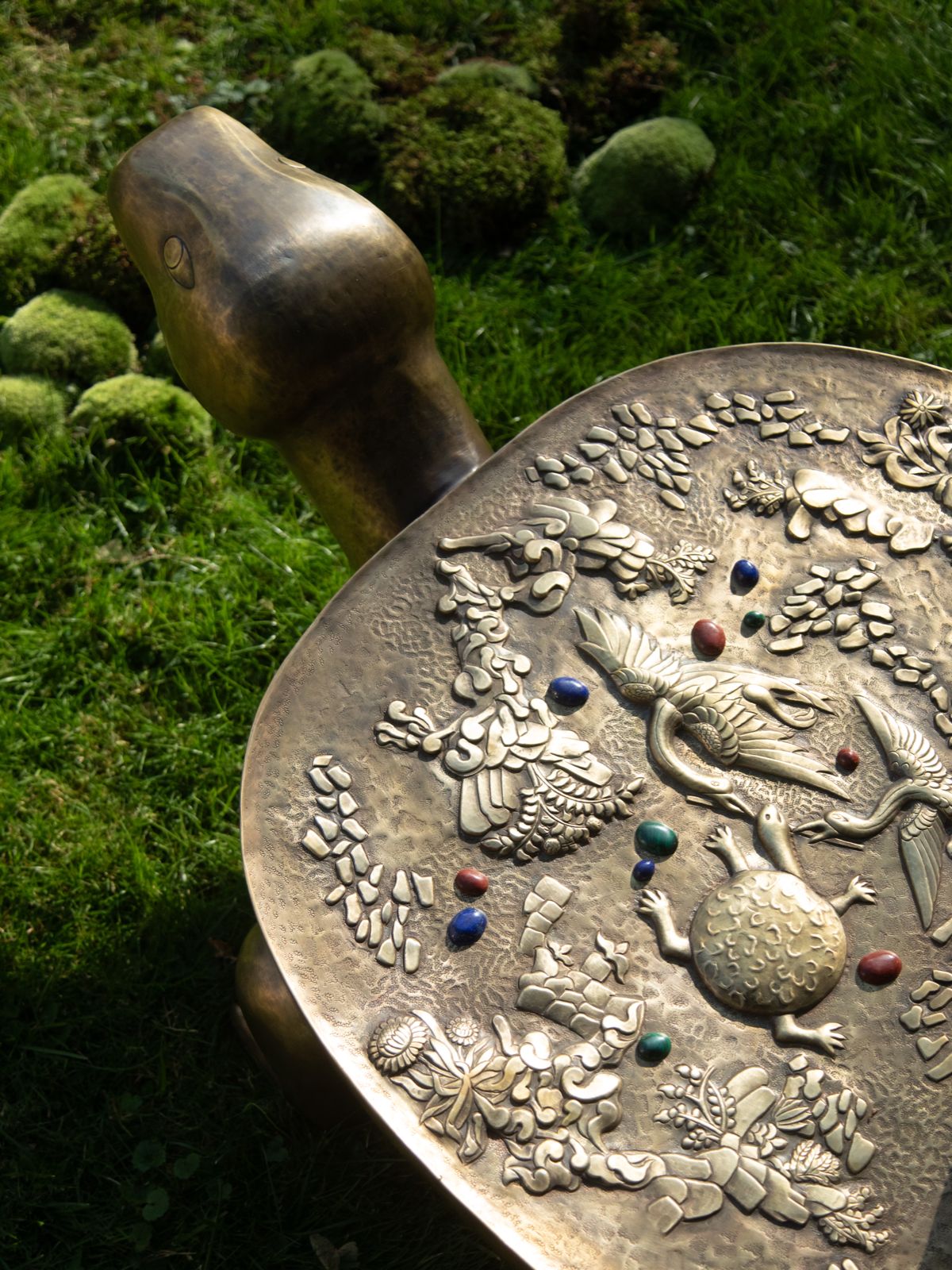
Sissel Tolaas’ lifelong research explores smell as 'the alphabet of the air'. For her, the collaboration was an unmissable invitation to translate the unseen intelligence of nature into something tangible.
'Nature is a living matter,' she explains. 'There are microbes, there is soil that send molecules to the animals of various kinds to keep everything alive. The ecosystem of life is driven by chemistry. Where there’s life, there’s a molecule, there’s air.'
Scent meets design
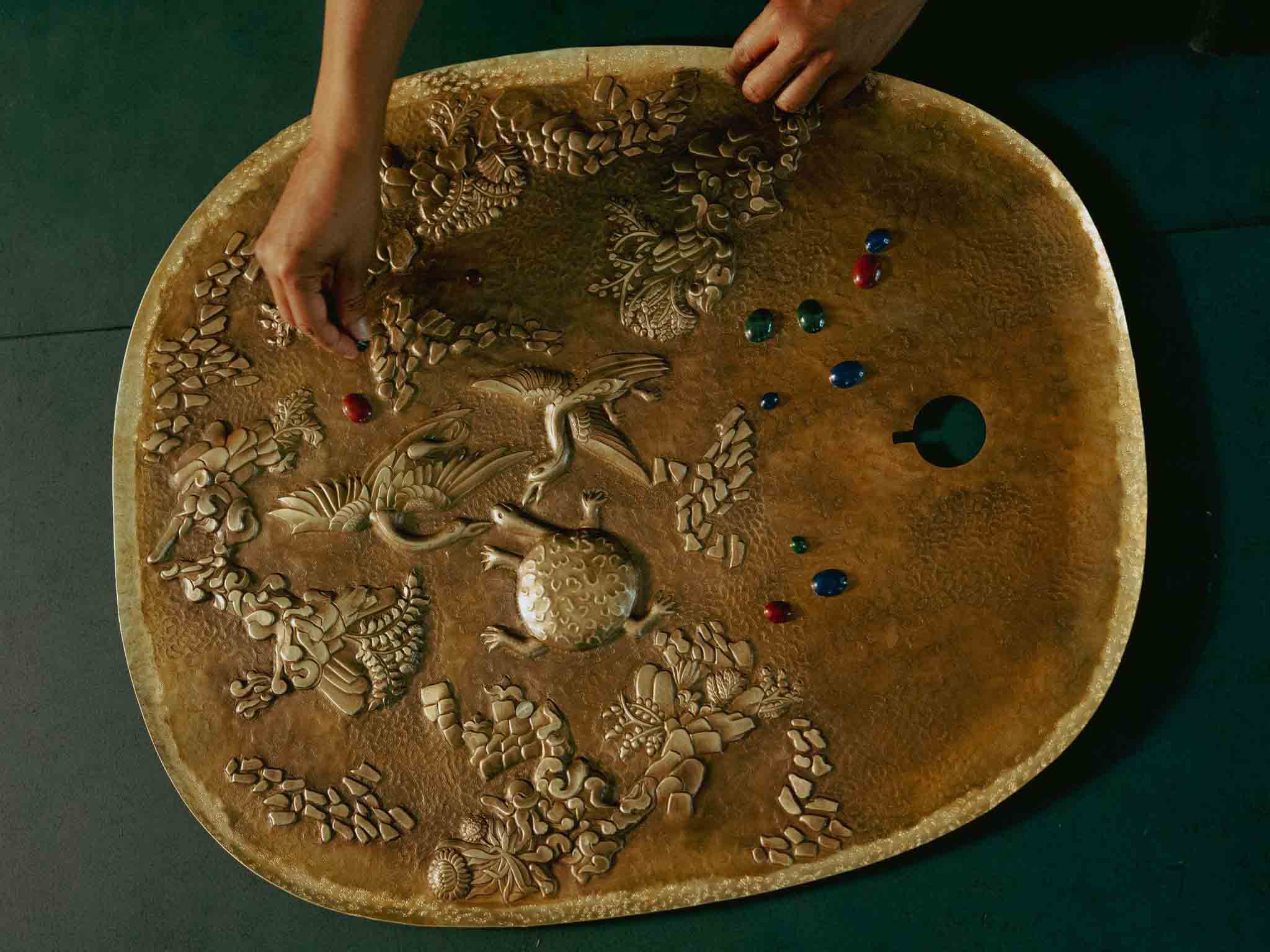
Solaas' process began in Goyal’s New Delhi workshop, capturing molecules released during the making of the sculptures, then extending into the field to record smell molecules from the habitats of elephants, tigers, and tortoises. These were analysed, replicated, and layered with scent molecules from Indian grasses and soil, to create a diffuse olfactory ecosystem that visitors inhale as they wander among the sculptures.
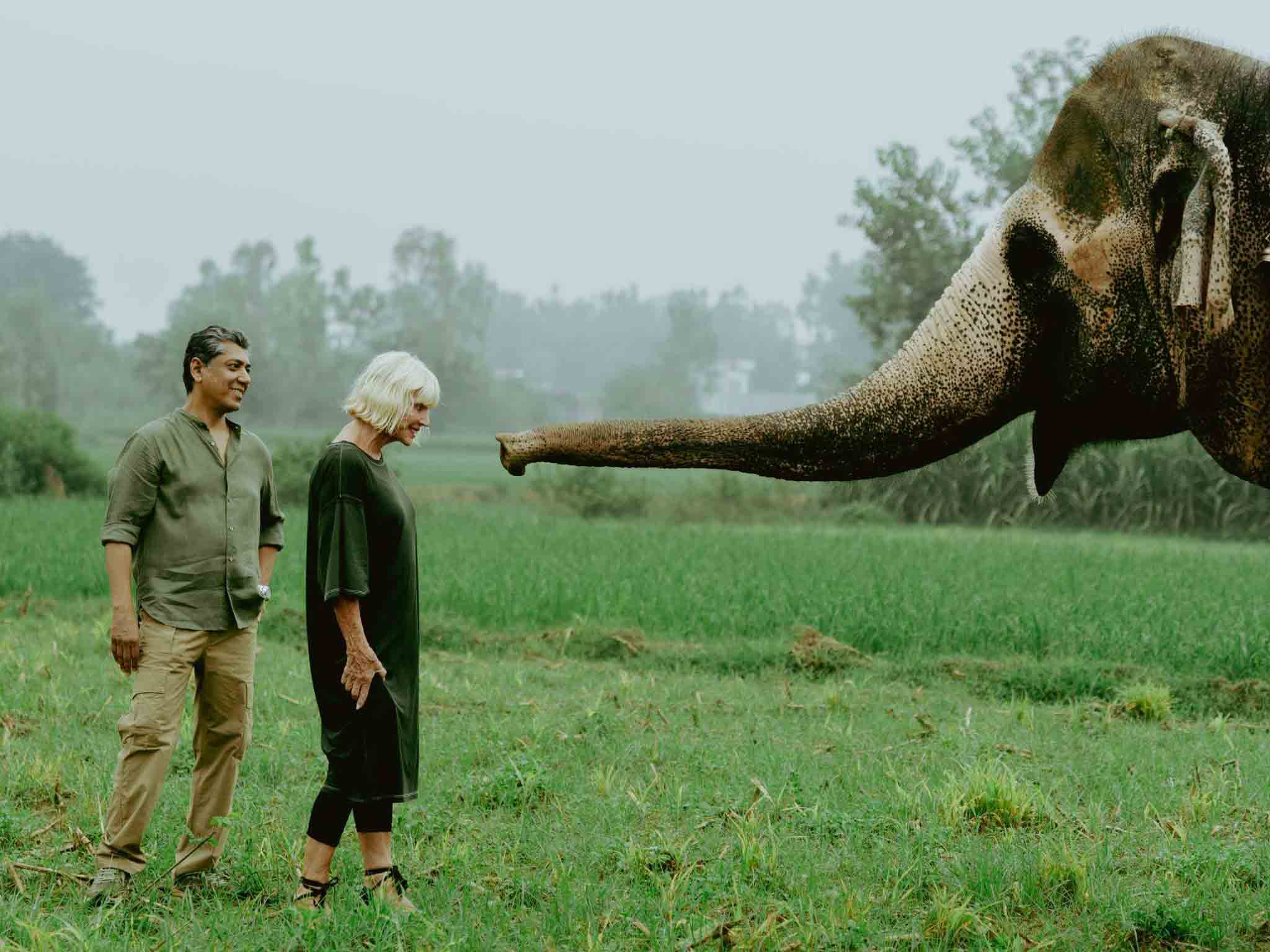
'Some molecules are even there to activate the molecules in nature,' she adds. 'Animals immediately get those messages. But to be able to understand that, you need to scale down to the level of the animals. That’s why I put the stools – so you take your time, sit down, feel the wind, and smell the popcorn smell emitting from the tiger…'
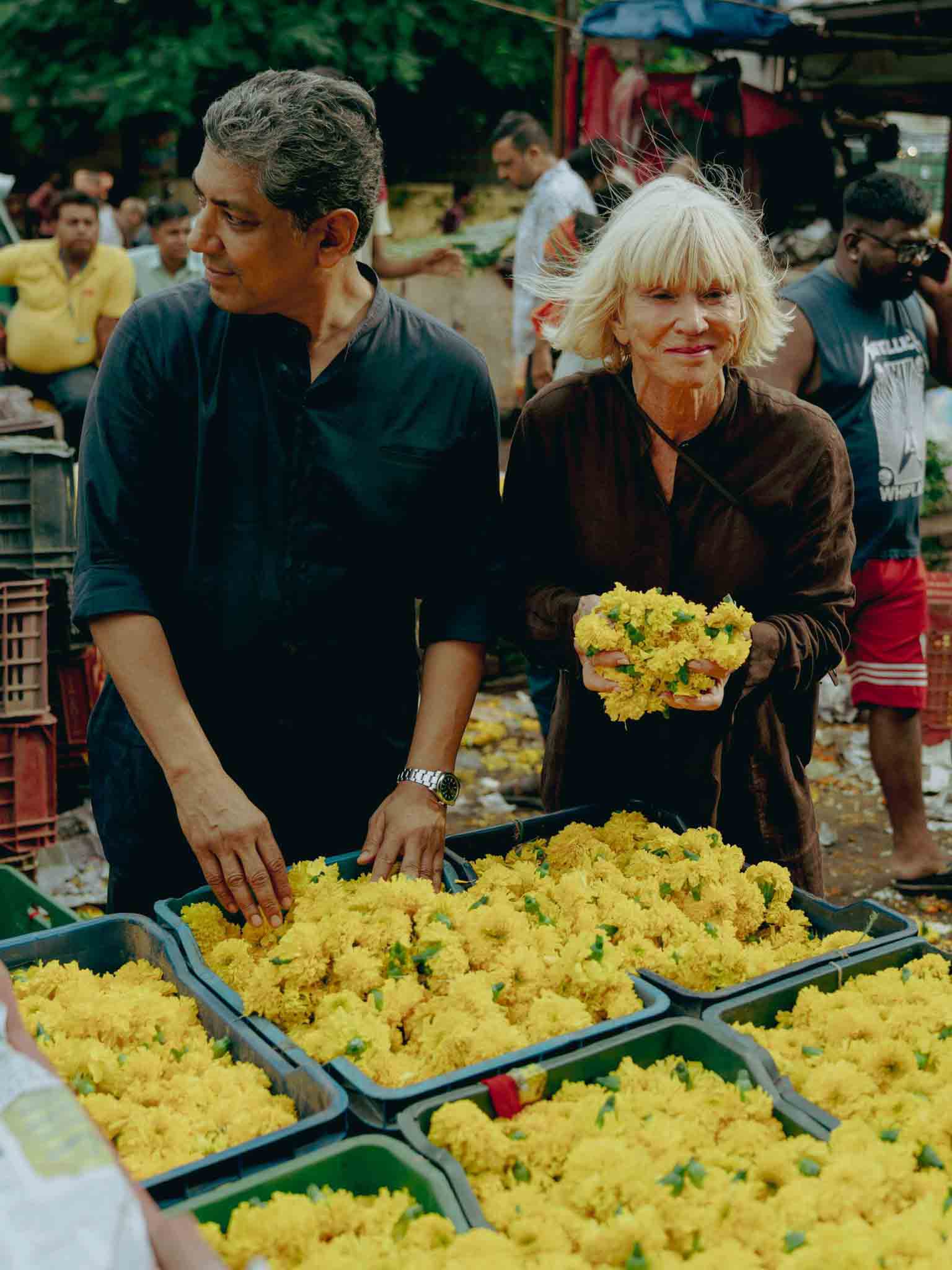
Indeed, that unmistakable toasted note is the scent of a tiger’s urine. It’s not unpleasant when you think popcorn, but when you know how Vyaghra, the tiger, emits that – well, it’s a playful yet precise reminder of the intimacy of olfactory communication. 'It’s like all the prejudices we have and how much information we miss out by being disconnected,' smiles Tolaas.
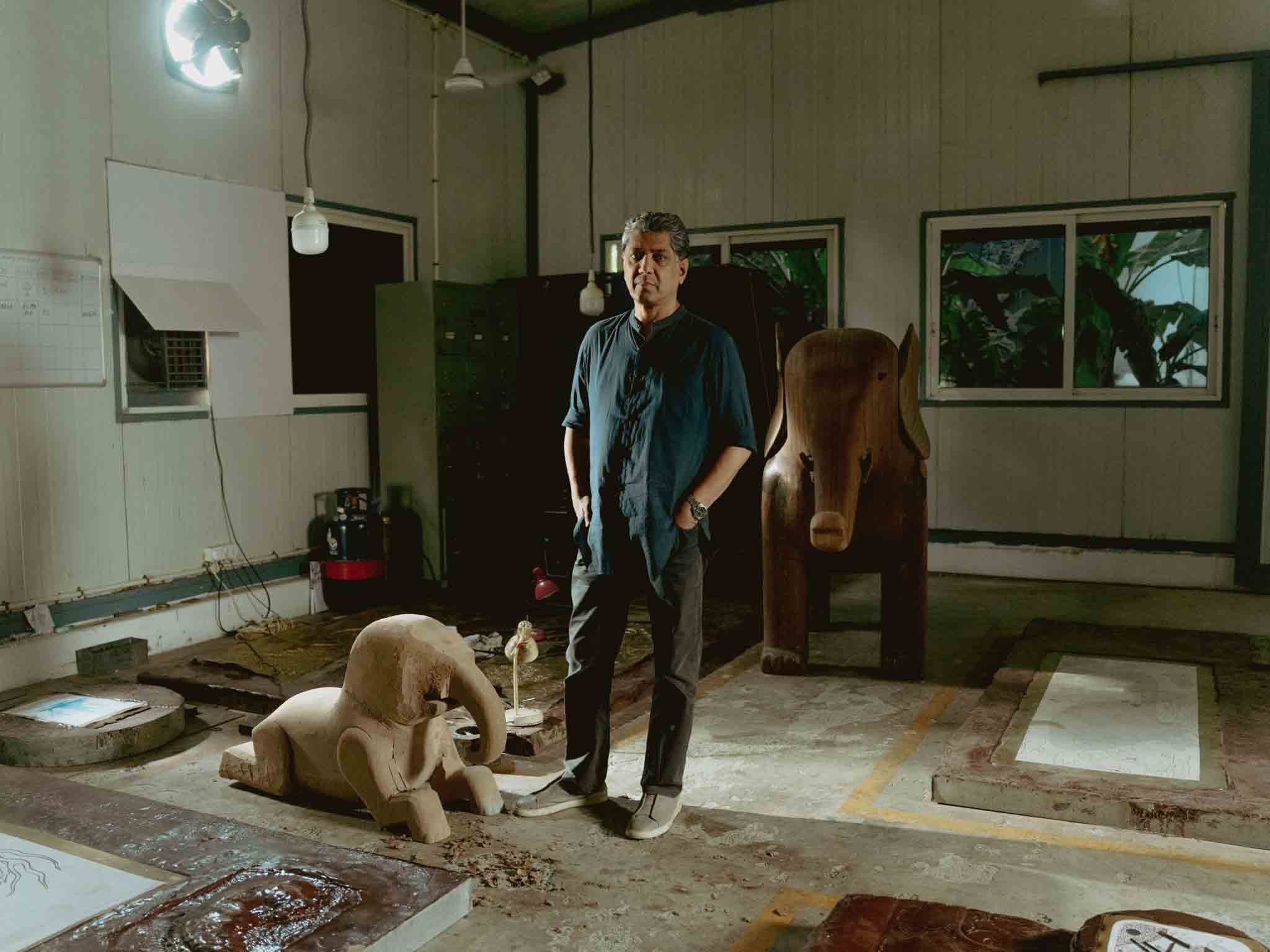
Across the installation, Tolaas has used scent to map the invisible relationships between soil, animals, and air. 'Everything is chemistry,' she says. 'Animals communicate through smell molecules – ‘help me get away from the tiger’, or ‘help me find the water’. Elephants can detect water from 20km away. I followed elephants in India to that water. The molecule that elephants were able to detect surrounds them, and some humans have that skill too. But to experience it, you have to sit down next to the elephant and wait for the wind to blow.'
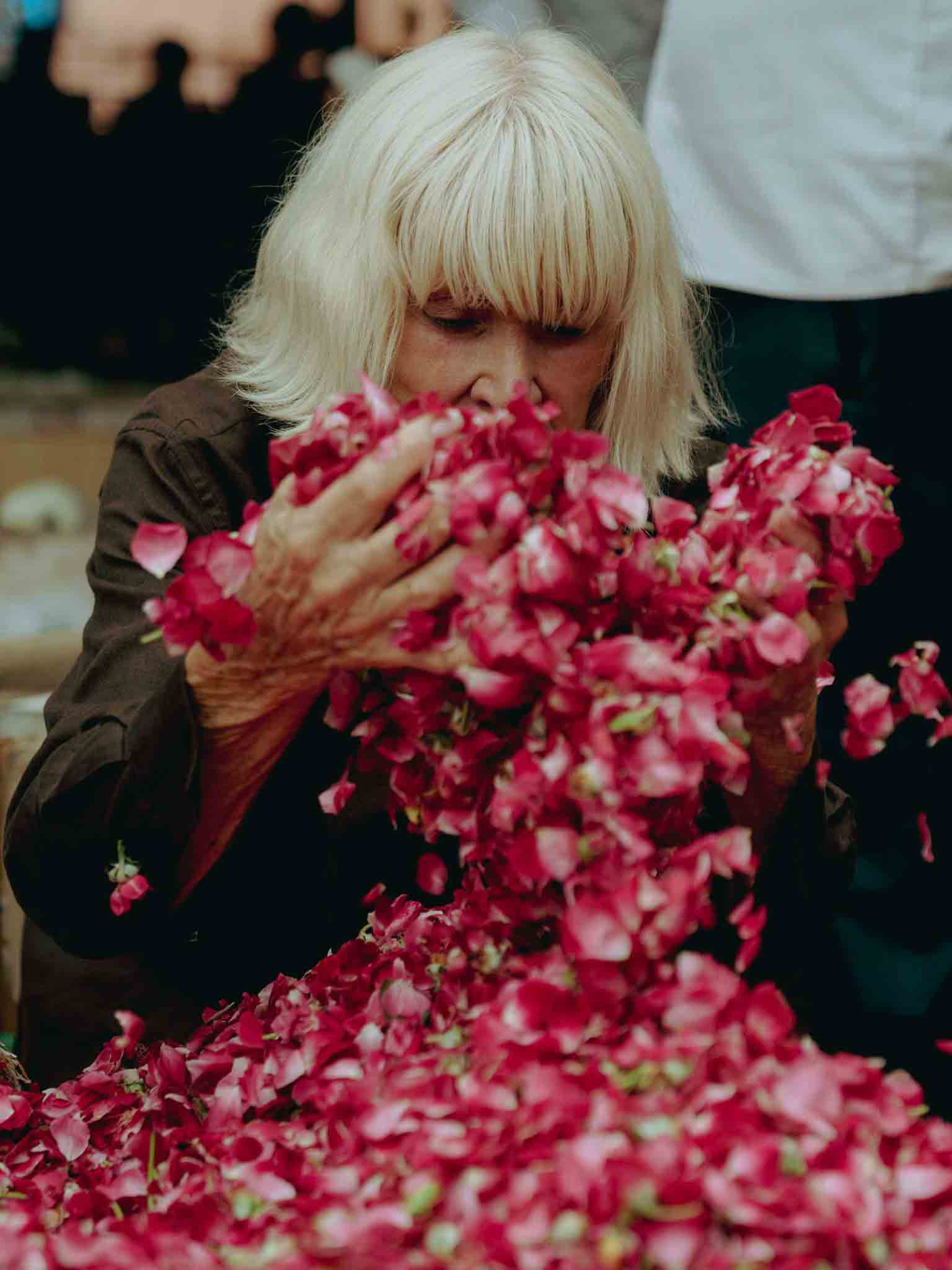
This act of stillness is central to the installation. Visitors are invited to slow their senses and rediscover the subtler frequencies of perception – what Tolaas calls 'the chemistry of empathy'. She continues: 'It’s an attempt to scale down. We just look around, we don’t see the picture. But the Indian relationship to animals – the fables, the spiritual and philosophical dimensions – becomes an extended part of the story. We asked ourselves how we could reactivate those stories and the content they’ve carried for generations, and bring them to the next level.'
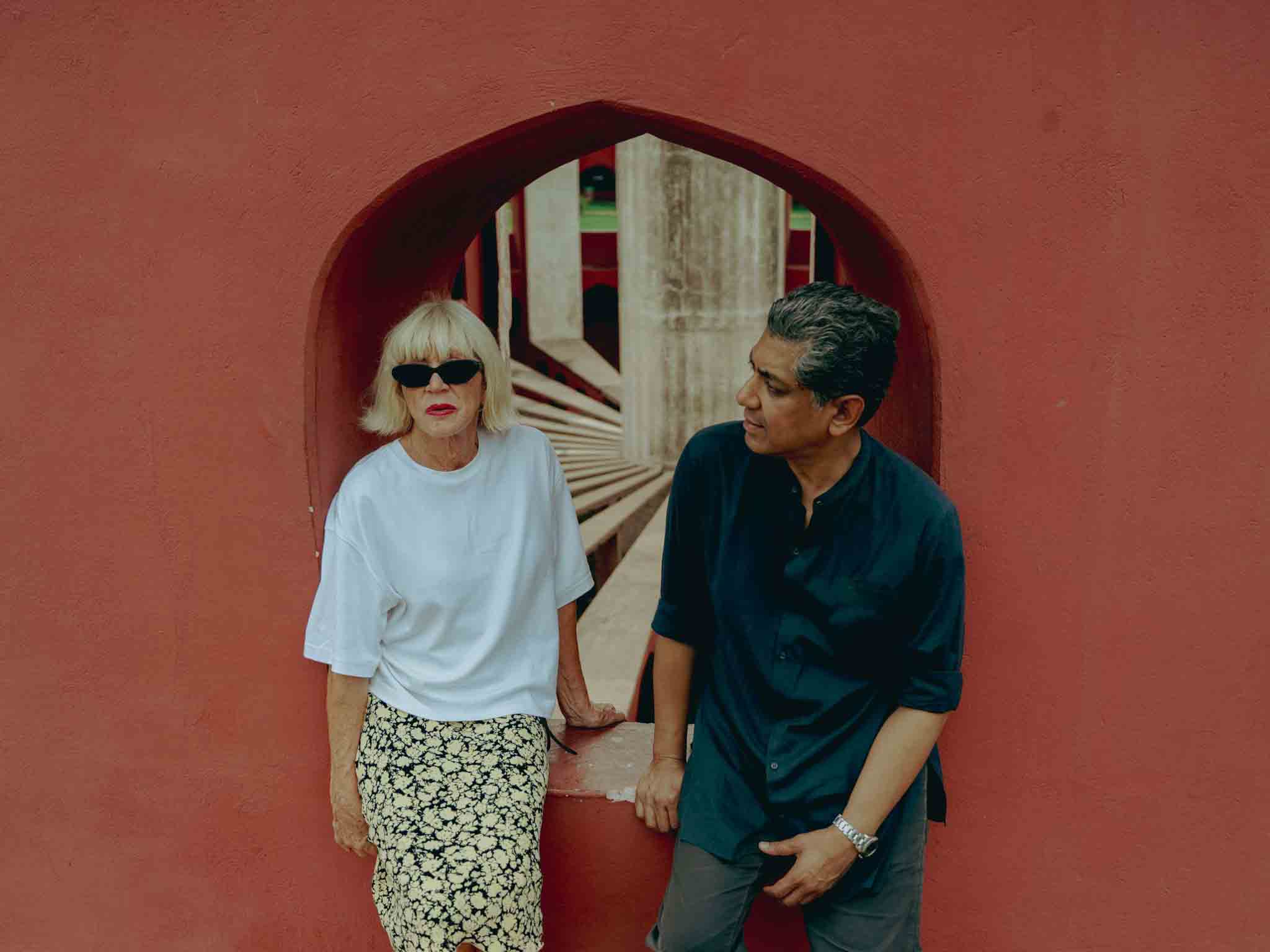
If Goyal’s sculptures give form to the idea of a living fable, Tolaas’ contribution gives it breath. Her scents are both real and metaphorical, reconstructions of molecules found in tiger musk, elephant skin, wet soil, and moss. One key molecule, geosmin, is the same compound that gives soil its smell after rain.
'That molecule is produced in the soil to attract bacteria as an indicator of fertility,' she says. 'When that smell isn’t there, it means the soil is dead, just dust and sand. So every time you smell it, it means fertility and life. That molecule has been proven to work on happiness in humans. We isolated it, replicated it, and the serotonin levels skyrocketed – it’s mind-blowing.'
At ‘The Soul Garden’, these chemical notes become an ambient choreography of emotion. 'Air is a shared lever,' says Tolaas. 'We all contribute, we all need it. We exhale information, we inhale information, and we belong. This is where it all begins.'
‘The Soul Garden’ is on view as part of Design Miami Paris, until 26 October 2025
L'hôtel de Maisons, 51 Rue de l'Université, 75007 Paris
Read about more of the best design exhibitions to see in Paris this week
Henrietta Thompson is a London-based writer, curator, and consultant specialising in design, art and interiors. A longstanding contributor and editor at Wallpaper*, she has spent over 20 years exploring the transformative power of creativity and design on the way we live. She is the author of several books including The Art of Timeless Spaces, and has worked with some of the world’s leading luxury brands, as well as curating major cultural initiatives and design showcases around the world.
-
 Hanker after a 1970s supercar? The Encor Series 1 elevates the Lotus Esprit to a new level
Hanker after a 1970s supercar? The Encor Series 1 elevates the Lotus Esprit to a new levelThis limited-edition remastering of the dramatic wedge-shaped Lotus Esprit stops at nothing to improve and enhance the original without losing sight of its analogue excellence
-
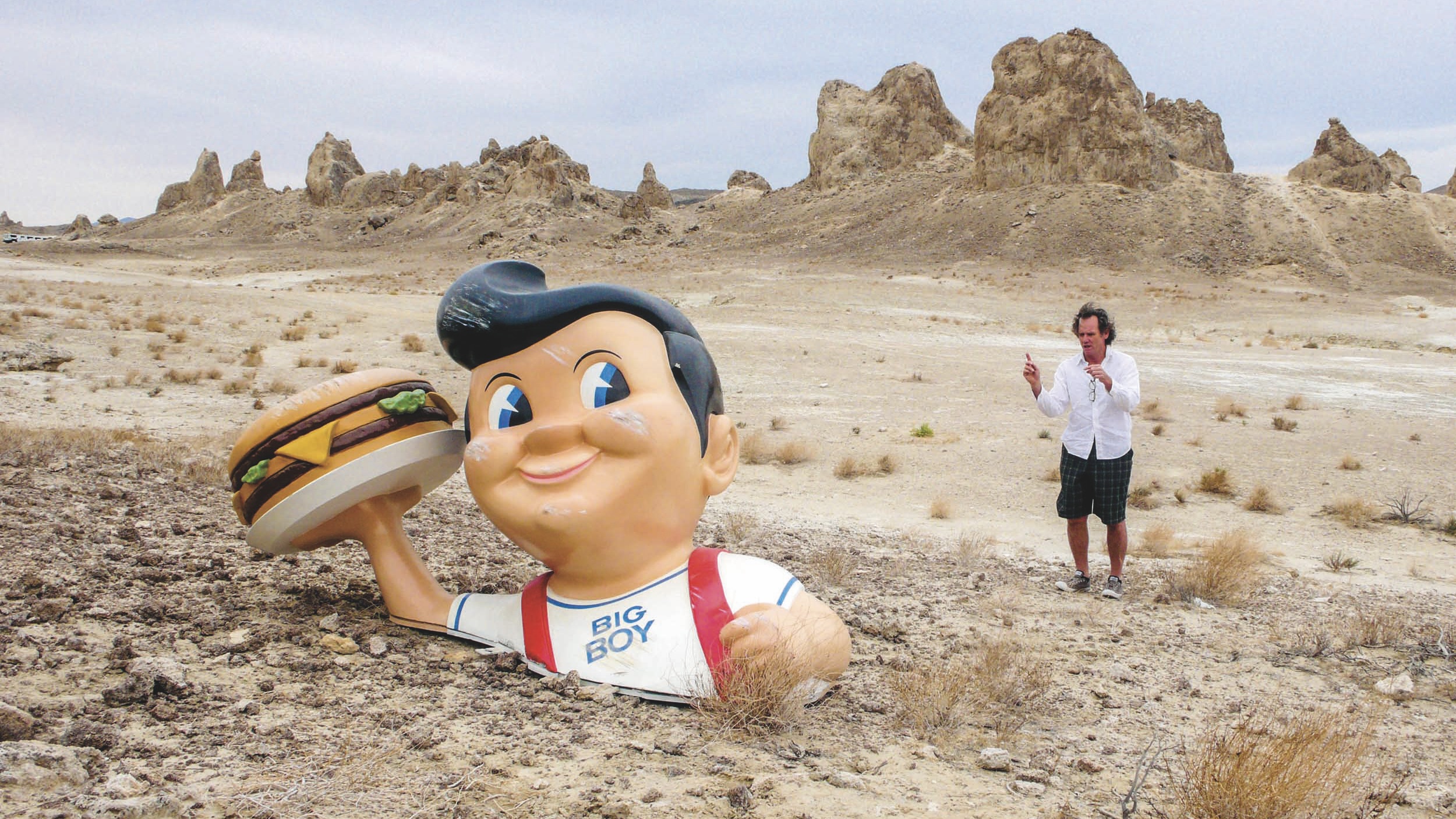 A new photo book takes you behind the scenes of some of cinema's most beloved films, from 'Fargo' to 'Charlie's Angels'
A new photo book takes you behind the scenes of some of cinema's most beloved films, from 'Fargo' to 'Charlie's Angels'Set decorator Lauri Gaffin captures Hollywood's quieter moments in an arresting new book
-
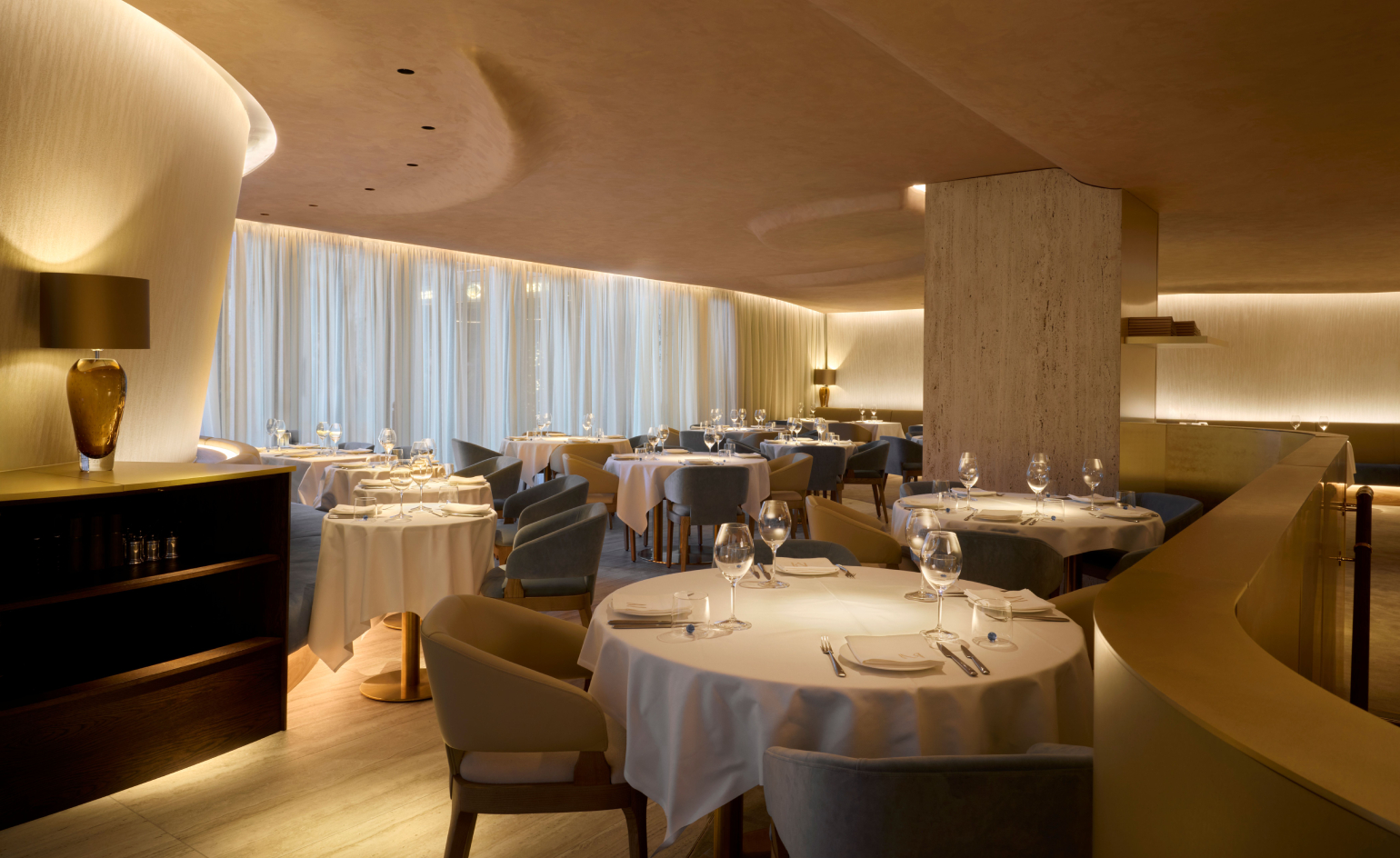 This sculptural London seafood restaurant was shaped by ‘the emotions of the sea’
This sculptural London seafood restaurant was shaped by ‘the emotions of the sea’In Hanover Square, Mazarine pairs a bold, pearlescent interior with modern coastal cuisine led by ‘bistronomy’ pioneer chef Thierry Laborde
-
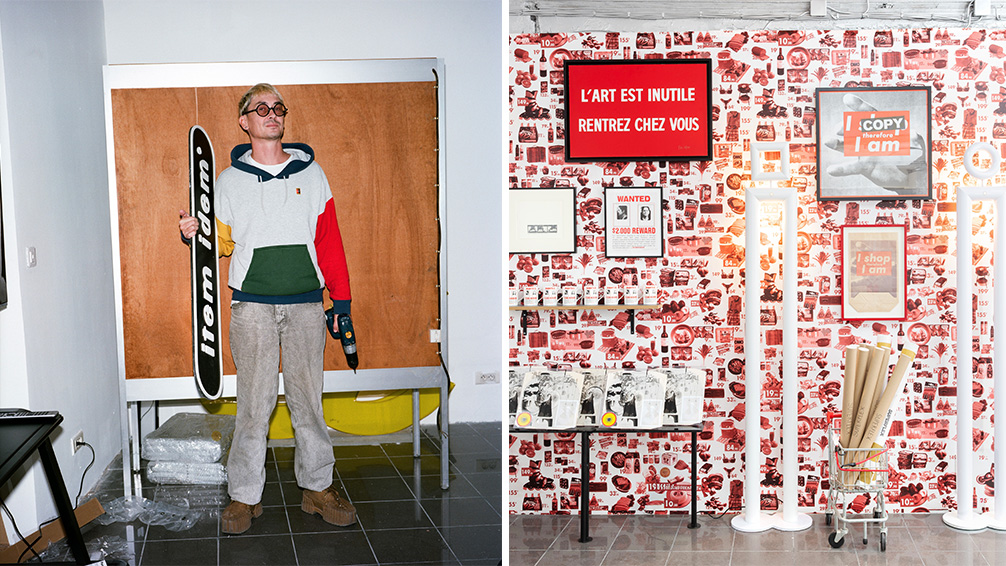 Is this Paris' most design-focused holiday shop?
Is this Paris' most design-focused holiday shop?Shop weird and wonderful design and fashion at this playful, postmodern exhibition from Item Idem, where commerce, culture and humour intersect
-
 Aussie vibes meet Parisian grandeur? This Sydney apartment pulls off the unlikely combination
Aussie vibes meet Parisian grandeur? This Sydney apartment pulls off the unlikely combinationLongtime clients of Dylan Farrell Design trusted the studio to go bold with the gut renovation of their Sydney flat – now an intriguing study in contrasts
-
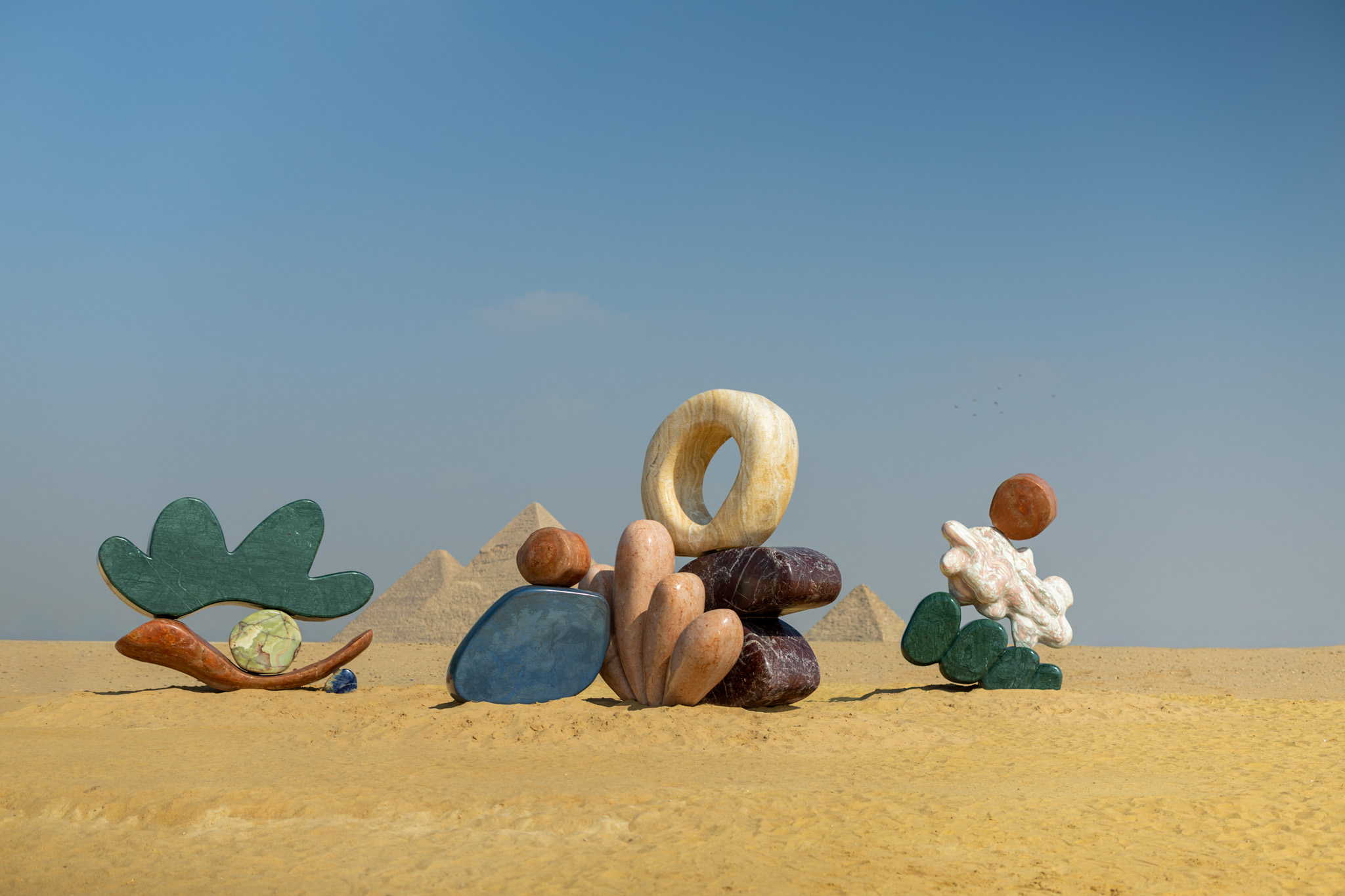 The Pyramids have a rival – monumental stone sculptures pop up in Giza
The Pyramids have a rival – monumental stone sculptures pop up in GizaOn the Giza Plateau, as part of Art d’Egypte’s ‘Forever is Now 05’, Studio Proba and SolidNature unveil sculptures celebrating geological colour, structural ingenuity and calibrated form
-
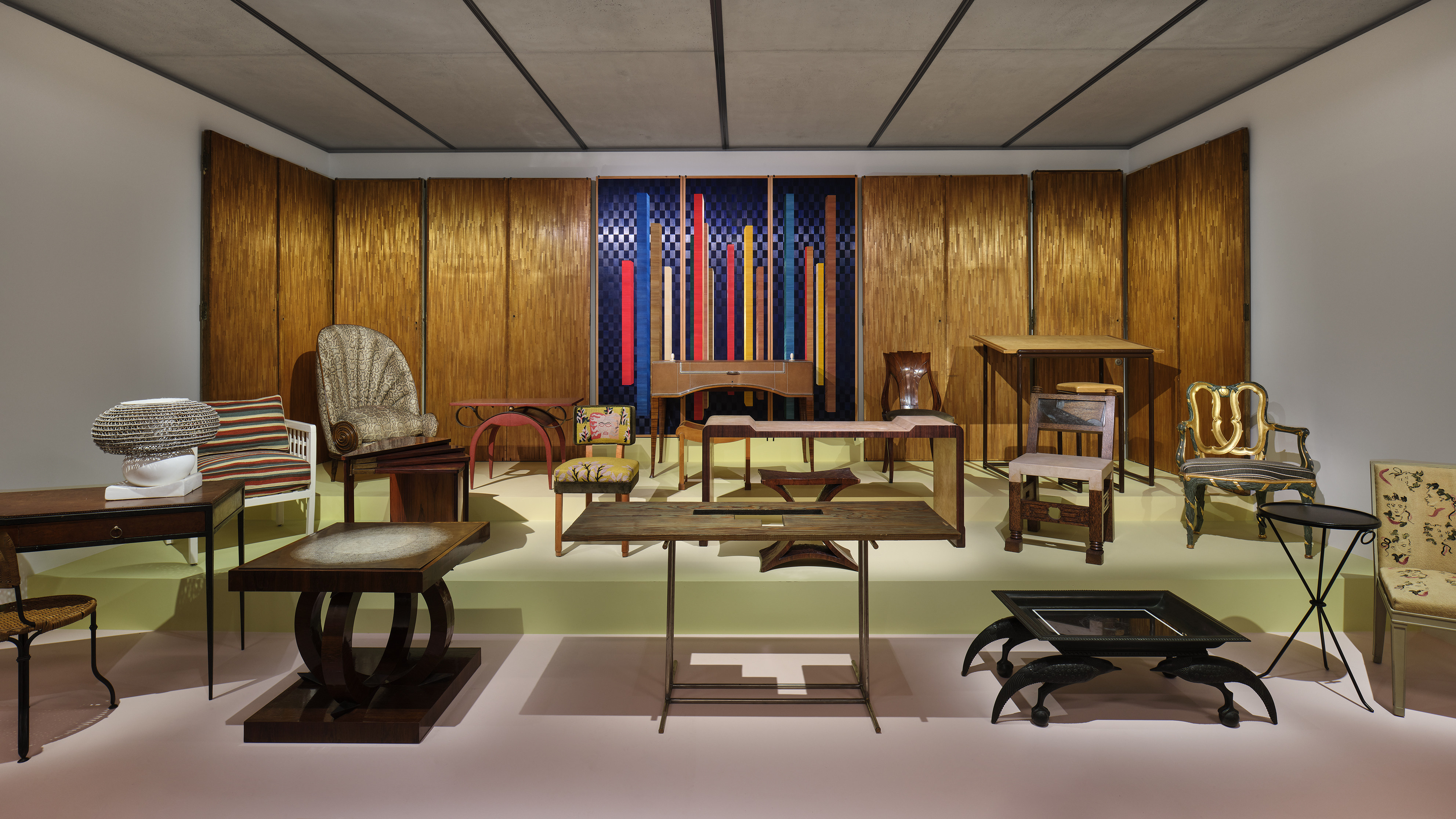 Art Deco's centenary is honoured with a grand exhibition in Paris
Art Deco's centenary is honoured with a grand exhibition in ParisTo mark 100 years of Art Deco, the Musée des Arts Décoratifs in Paris is holding a retrospective that includes furniture, tableware, clothing, jewellery and objets d’art (on view until 26 April 2026)
-
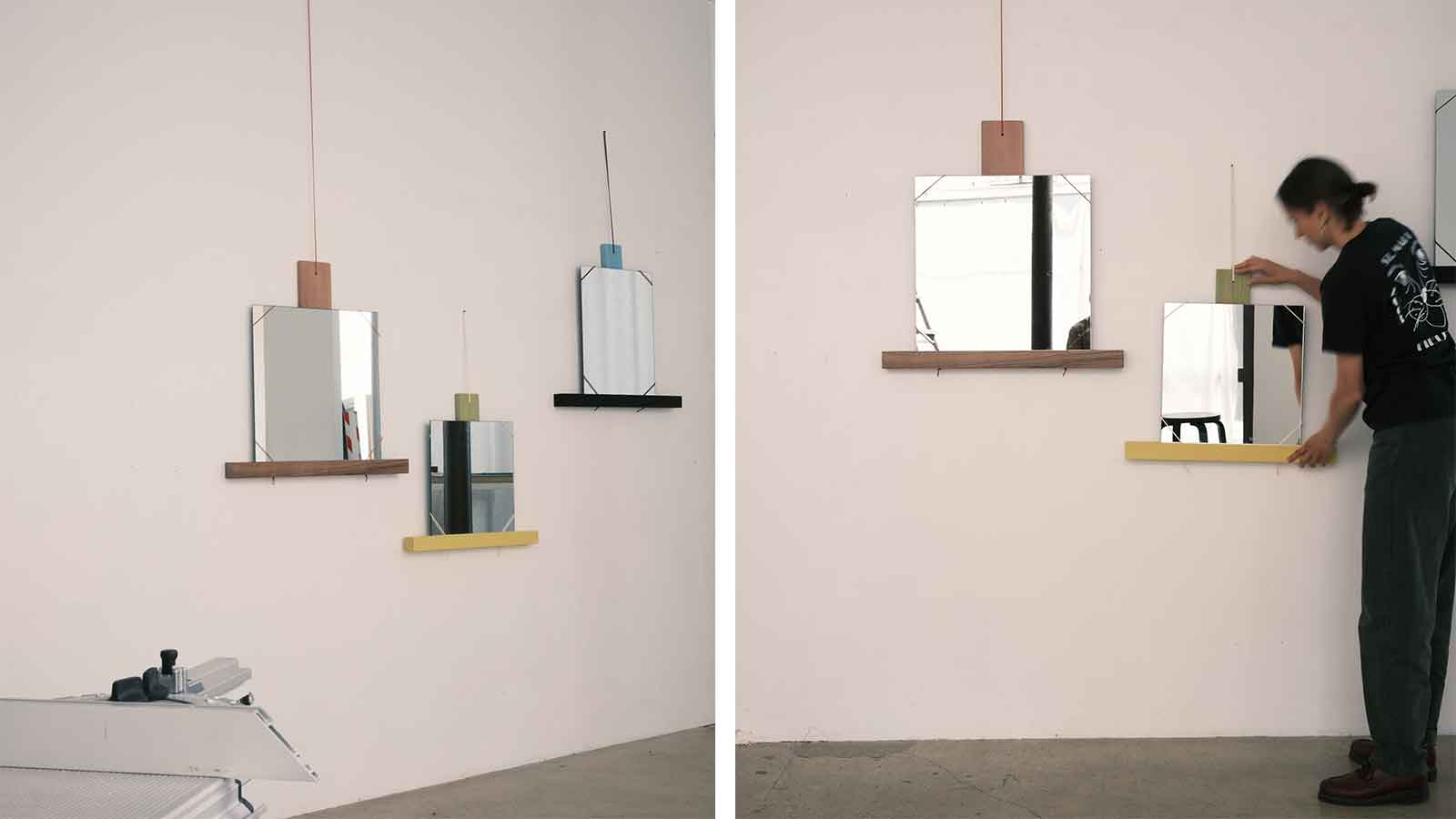 Making mirrors with A Vibe Called Tech, the collective democratising design
Making mirrors with A Vibe Called Tech, the collective democratising designLast week, Wallpaper* Paris Editor Amy Serafin spent a day with a group of creatives led by Julie Richoz, making mirrors: here's what went down (and how to make your own)
-
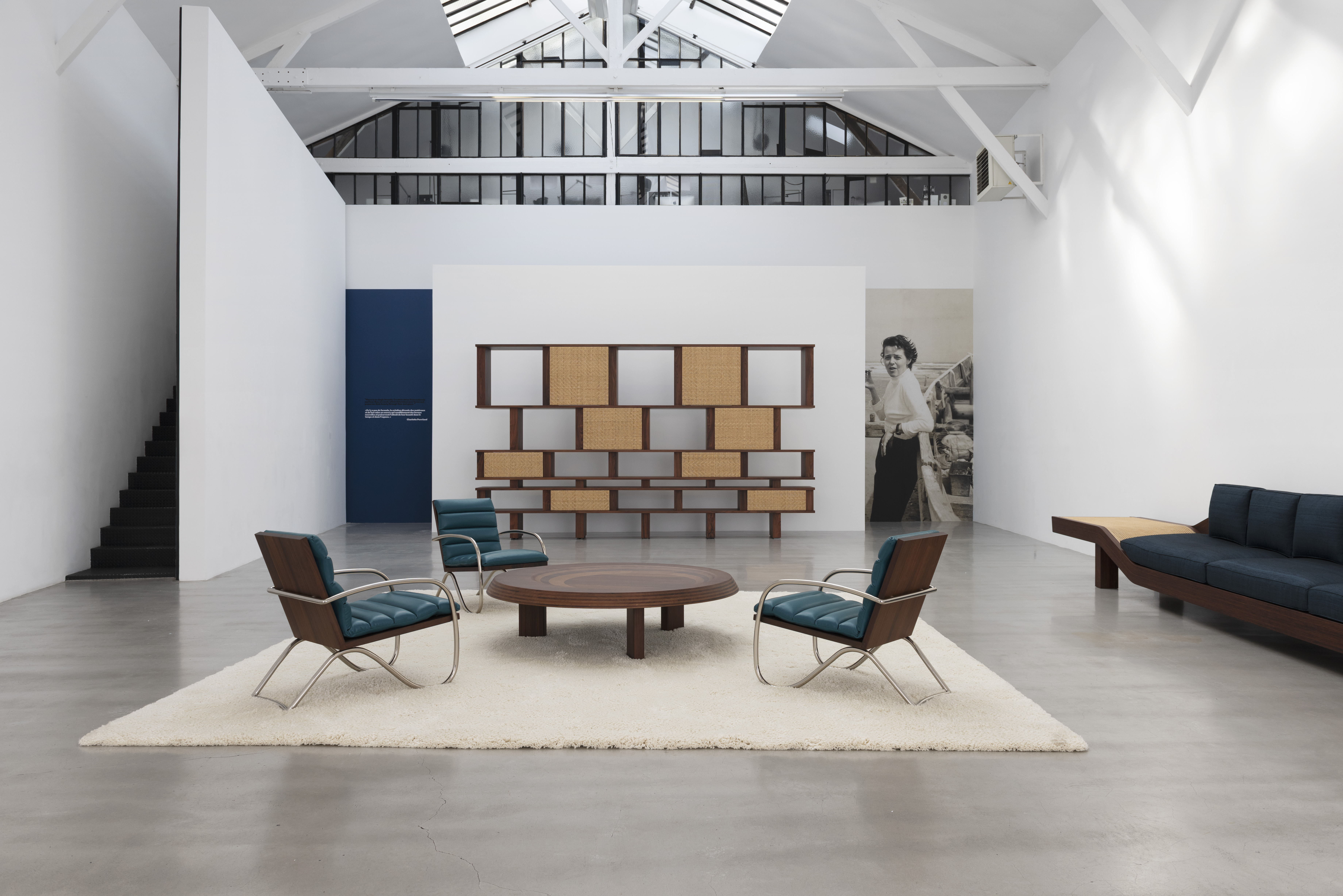 Saint Laurent's Anthony Vaccarello curates four rare Charlotte Perriand reissues
Saint Laurent's Anthony Vaccarello curates four rare Charlotte Perriand reissuesThese lesser-seen Charlotte Perriand furniture designs are reissued in a limited edition and on display at Paris' Galerie Patrick Seguin (until 22 November 2025)
-
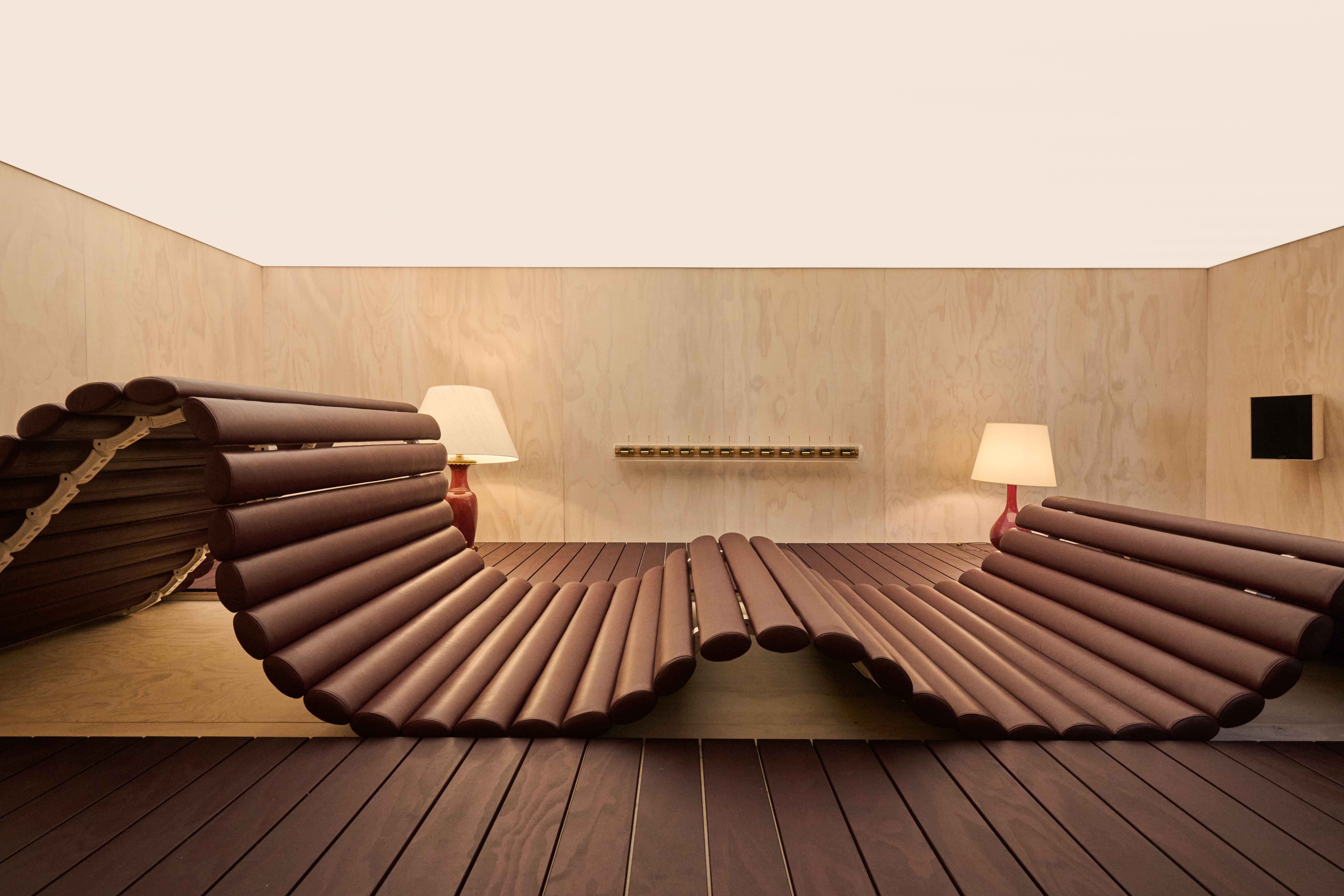 Best of Design Miami Paris 2025: animal sculptures and musical ping-pong tables
Best of Design Miami Paris 2025: animal sculptures and musical ping-pong tablesDesign Miami Paris returns to the Hôtel de Maisons (until 26 October 2025): here are the Wallpaper* highlights
-
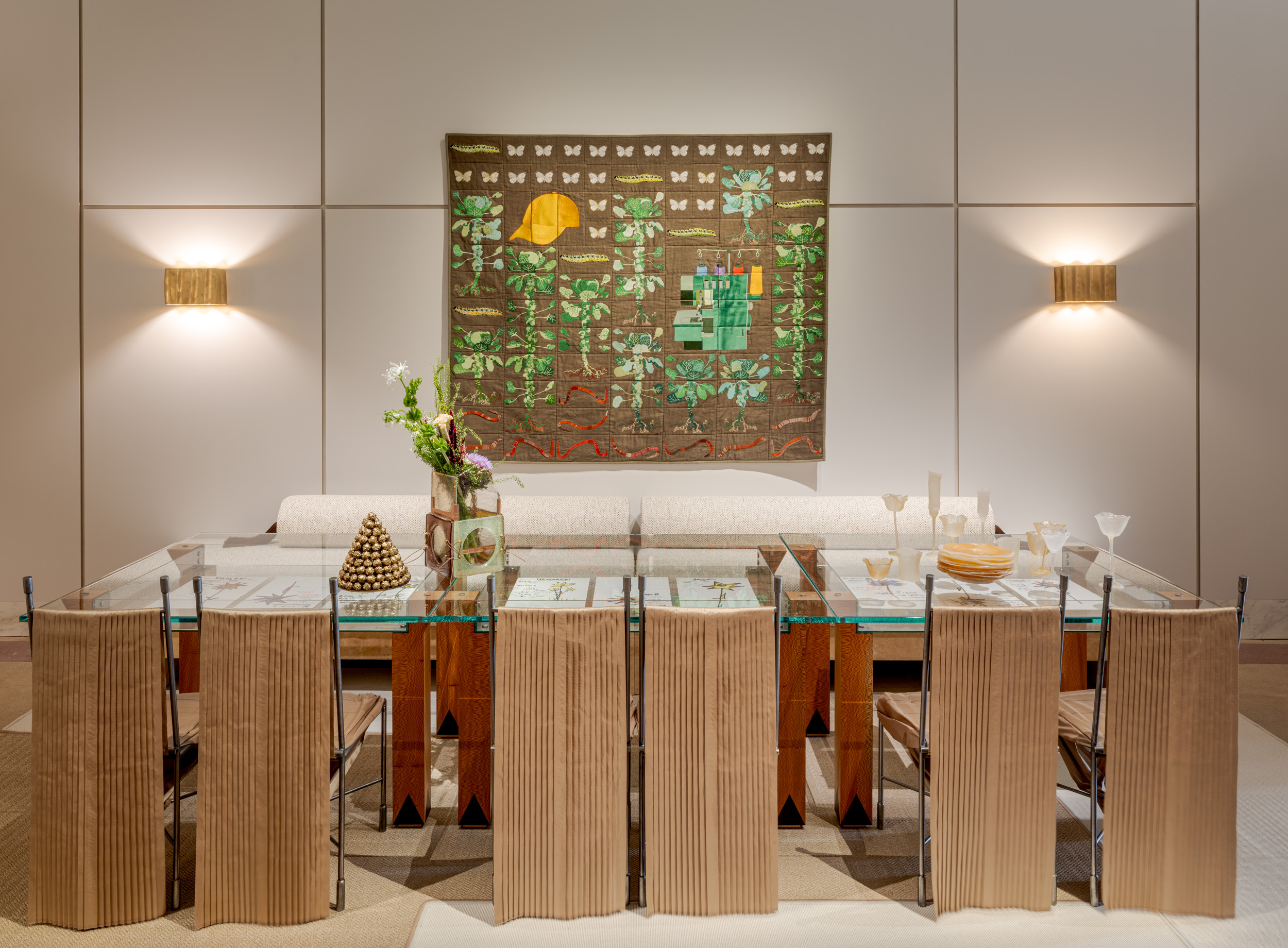 These are the best design exhibitions to see in Paris this week
These are the best design exhibitions to see in Paris this weekAs Design Miami Paris and Art Basel Paris make their return, we round up the best design exhibitions to discover in the city